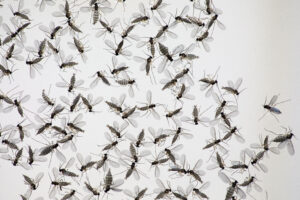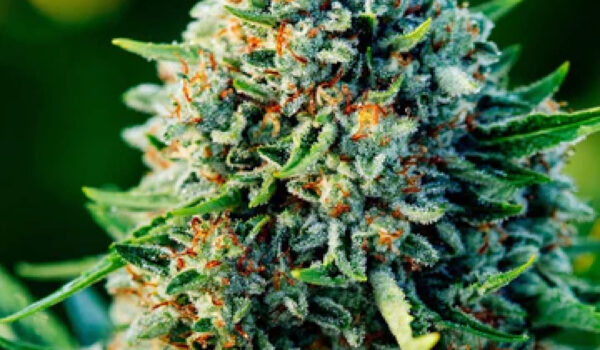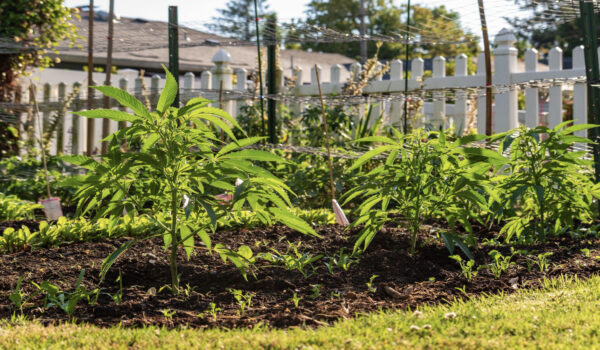by Rincon-Vitova

If you’ve grown cannabis indoors, you know how annoying fungus gnats can be. They mostly fly around my grow space reminding that I’m over watering my plants. The best way to fight these garden pests is to get to know them. The following notes about Fungus Gnats were sent over from the insectary Rincon-Vitova and you can find them at https://rinconvitova.com/
Fungus Gnats
Fungus gnats are common pest of indoor plants in wet environments where algae and fungus grow. Infested plants lose vigor, color, and pesky flies are seen emerging from the soil, especially during watering. Larval stage feeds on tender roots/root hairs and often transmits the soil-borne fungi which cause root rots: Pythium spp., and Fusarium spp, Phytopthera spp.
Identification
Fungus gnats are often confused with shore flies, but can be distinguished by their long, beadlike antennae, their long legs, and their wings which have a prominent “Y”-shaped vein.
Fungus gnats are poor flyers, and tend to run along the soil surface when disturbed.
Larvae are maggots, which have no legs, but a distinctive black head capsule.
Life Cycle
The life cycle of fungus gnats may extend over five weeks.
Eggs are laid near the soil surface (females can lay 100-200 eggs) and hatch in 4-6 days.
Larvae feed 2-3 wks on decaying plant material, algae, soil fungi (fine roots /root hairs &tender lower stems)
Monitoring
Yellow sticky card placed at plant and soil levels are used to monitor flying adults.
Horizontal placement of cards just above soil surface is more effective than vertical placement above canopy
Replace cards every 3-4 weeks, particularly in warm weather.
Approx one sticky trap per 500 sq ft
Increase density of traps in propagation areas to trap out adults
If trap counts > 20 gnats/trap/week, or are increasing, do not rely on preventive bio-control agents
Cultural Practices
Quarantine incoming plants to inspect for fungus gnat populations.
Sterilize soil.
Improve drainage and water management to eliminate wet spots.
Cover floors with ground-cover fabric to eliminate breeding sites.
Treat soil with hydrated lime; (1.5 lb./gal), applied to soil surface as a slurry. 1 month residual.
Copper sulfate can be applied to soil at a rate of 1 lb per gallon. 3 month residual.
Use eggplant as a trap crop.
Plant cover crops to control dust.
Avoid using pesticides: Pyrethroids: (bifenthrin, cyfluthrin, fluvalinate, and permethrin). These materials are highly toxic to natural enemies and pollinators.
Biological Control
Bacillus thurengiensis israelensis: Applied through the watering system, spores of this bacterium are ingested and kill the larval stages of fungus gnats. There is little residue in the soil. B.t.i is effective in lowering high populations of fungus gnats, and should also be compatible with subsequent applications of Stratiolaelaps to maintain low population levels.
Gnatrol is a Biological Insecticide for fungus gnat larva control (only larva: time applications correctly).
OMRI-listed
Apply with adequate water as a soil drench
Application Rates: Application rates may vary among different commercial products. Read labels carefully.
Light Infestations: 3.2 to 6.4 oz/100 gallons
Heavy infestations: 13 to 26 oz/100 gallons
When all life stages are present, make weekly applications for 3 weeks at the “heavy” rate.
Stratiolaelaps scimitus:
These mites reproduce rapidly and move well across the soil, feeding on larval stages of fungus gnats.
Stratiolaelaps keep fungus gnat levels low, (below 10/trap/week).
These mites are not effective to reduce or eliminate high populations.
They also provide supplemental control for thrips (in the pupal stage) as well as springtails.
The mites adapt well to the various growth media, but do not survive freezing or flooding conditions.
Application Rates:
1 liter of 25,000 mites per 1,000 sq ft, applying approximately 1-2 tablespoons to each pot surface/rockwool cube
DO NOT mix into soil/media.
Reapply in 2-3 weeks
Steinernema feltiae:
Beneficial nematodes actively seek out insect hosts and destroy larval stages of insects by entering the insect and releasing bacteria which kill the insect. The bacteria break down the insect for the nematode.
They can be applied to the soil through conventional sprayers or through the irrigation system.
Steinernema feltiae nematodes are effective at lowering high populations, can be used therapeutically before introducing Stratiolaelaps mites.
The nematodes have no difficulty in moving through rockwool or soil growing media.
Application Rates: Application rates may vary depending on the producer.
1 million per 50 sq ft. or 1 billion per acre will gain suppression in 3-4 weeks.
Halve the application rate for suppression in twice as long; 6-8 weeks.
Persistent infestations may require repeated applications (3 applications: 1.0 billion nematodes/acre, 7-10 days apart).
Summary of Strategies
Quarantine new plants
Sterilize soils
Eliminate wet spots
Yellow sticky cards
Beware of root rot problems
Hydrated lime
Bacillus thurengiensis israelensis.
Apply Stratiolaelaps as preventive treatment.
Apply Nematodes to reduce high populations.


